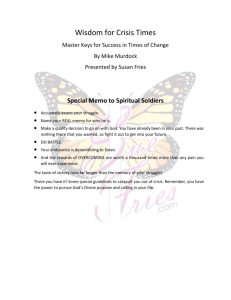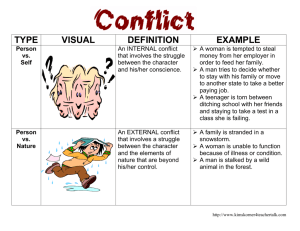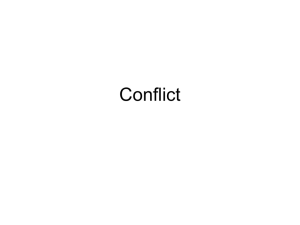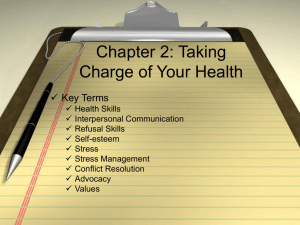Teaching About the American Revolution and the Notion of Freedom
advertisement
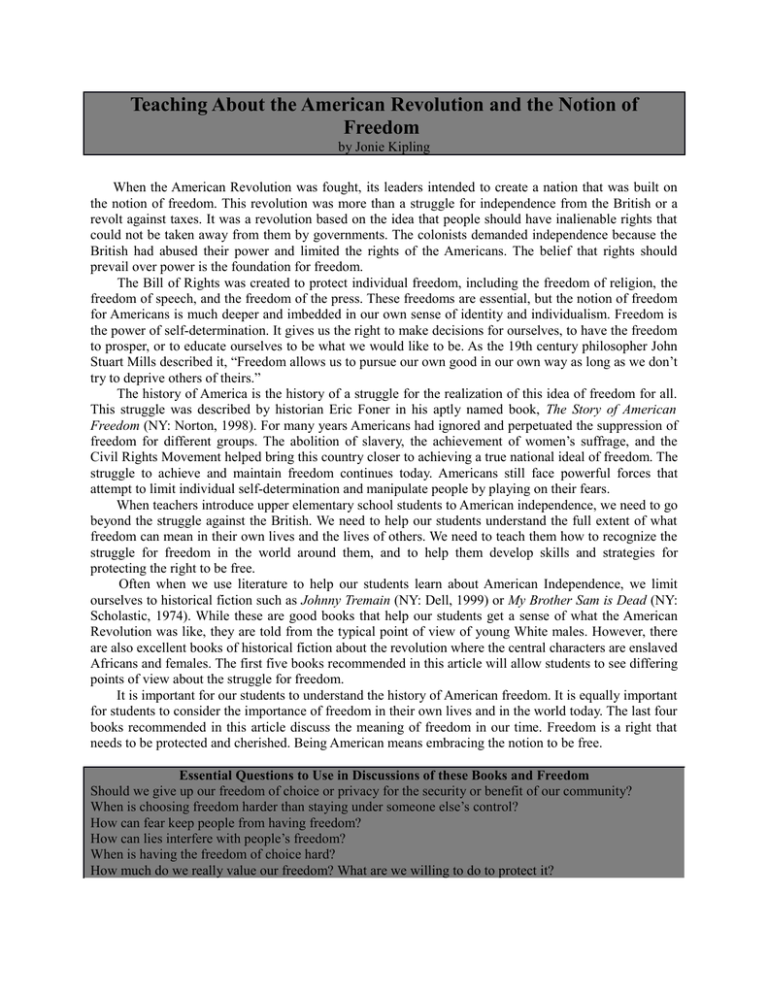
Teaching About the American Revolution and the Notion of Freedom by Jonie Kipling When the American Revolution was fought, its leaders intended to create a nation that was built on the notion of freedom. This revolution was more than a struggle for independence from the British or a revolt against taxes. It was a revolution based on the idea that people should have inalienable rights that could not be taken away from them by governments. The colonists demanded independence because the British had abused their power and limited the rights of the Americans. The belief that rights should prevail over power is the foundation for freedom. The Bill of Rights was created to protect individual freedom, including the freedom of religion, the freedom of speech, and the freedom of the press. These freedoms are essential, but the notion of freedom for Americans is much deeper and imbedded in our own sense of identity and individualism. Freedom is the power of self-determination. It gives us the right to make decisions for ourselves, to have the freedom to prosper, or to educate ourselves to be what we would like to be. As the 19th century philosopher John Stuart Mills described it, “Freedom allows us to pursue our own good in our own way as long as we don’t try to deprive others of theirs.” The history of America is the history of a struggle for the realization of this idea of freedom for all. This struggle was described by historian Eric Foner in his aptly named book, The Story of American Freedom (NY: Norton, 1998). For many years Americans had ignored and perpetuated the suppression of freedom for different groups. The abolition of slavery, the achievement of women’s suffrage, and the Civil Rights Movement helped bring this country closer to achieving a true national ideal of freedom. The struggle to achieve and maintain freedom continues today. Americans still face powerful forces that attempt to limit individual self-determination and manipulate people by playing on their fears. When teachers introduce upper elementary school students to American independence, we need to go beyond the struggle against the British. We need to help our students understand the full extent of what freedom can mean in their own lives and the lives of others. We need to teach them how to recognize the struggle for freedom in the world around them, and to help them develop skills and strategies for protecting the right to be free. Often when we use literature to help our students learn about American Independence, we limit ourselves to historical fiction such as Johnny Tremain (NY: Dell, 1999) or My Brother Sam is Dead (NY: Scholastic, 1974). While these are good books that help our students get a sense of what the American Revolution was like, they are told from the typical point of view of young White males. However, there are also excellent books of historical fiction about the revolution where the central characters are enslaved Africans and females. The first five books recommended in this article will allow students to see differing points of view about the struggle for freedom. It is important for our students to understand the history of American freedom. It is equally important for students to consider the importance of freedom in their own lives and in the world today. The last four books recommended in this article discuss the meaning of freedom in our time. Freedom is a right that needs to be protected and cherished. Being American means embracing the notion to be free. Essential Questions to Use in Discussions of these Books and Freedom Should we give up our freedom of choice or privacy for the security or benefit of our community? When is choosing freedom harder than staying under someone else’s control? How can fear keep people from having freedom? How can lies interfere with people’s freedom? When is having the freedom of choice hard? How much do we really value our freedom? What are we willing to do to protect it? Historical Fiction About the Revolutionary Era Helmer, Diana. Give Me Liberty. Logan, Iowa: Perfection Learning, 2000. As families in colonial Virginia debate grievances against Britain and prepare for possible war, a young slave boy considers the meaning of freedom. He agrees to fight in place of his owner’s son, hoping that when the war is over he too will be granted his own independence. This story, told from the point of view of the young slave boy named Moses, considers the importance of personal freedom as well as national independence (Easy read). Krensky, Stephen. The Printer’s Apprentice. NY: Delacorte, 1995. Gus is a ten-year old boy serving as an apprentice to a printer and publisher in New York City in the 1730s. This story focuses on the historical trial of John Peter Zenger, who published a newspaper that criticized the then governor of New York, who was appointed by the King of England. Zenger was imprisoned and tried for slander against the governor. Important issues raised in this book are the issues of freedom of speech and freedom of press. The story also examines how fear of retaliation can often silence the voice of citizens (Easy Read). Lavender, William. Just Jane. NY: Harcourt, 2002. Lady Jane is a young English girl of aristocratic birth, who when her father dies is sent to live with her closest family members living in the American Colonies. The colonies are on the verge of revolting against the King, and Jane realizes that she is not sure which family members she will stand with as they split to take opposing sides in the battle for American freedom. Jane faces her own challenges as she faces the idea of personal liberty as she grows into a young woman who needs to make choices for herself (Challenging read). Rinaldi, Ann. Taking Liberty. NY: Simon and Schuster, 2002. This is the fictional account of the true story of Oney Judge, a young girl born into slavery in George Washington’s home at Mt. Vernon. Even though Oney finds happiness and a certain degree of security in the Washington home, the reality of slavery is always lurking in the shadows, reminding Oney that she is only property. She has to decide between the comfort of living in her owner’s home and running away to freedom where she will face the challenge of having to take care of herself (Average read). Collier, James and Christopher Collier. The Winter Hero. NY: Scholastic Books, 1978. Justin Conkey is a 13 year old boy living in Boston after the Revolutionary War. His father died in the war and was considered a hero who fought for American freedom. Now, Boston farmers are upset about rising taxes and Justin is determined to fight for this cause. He takes up arms and participates in Shays Rebellion. This is the story of Americans fighting for the first time against oppression in their own new government (Average read). Books that Discuss the Meaning of Freedom Today Haddix, Margaret. Among the Free. NY: Simon and Schuster, 2006. Luke is a thirteen-year old boy, living in the future in a time when famine and drought has caused the government to forbid families from having more than 2 children. But Luke is a third child. Hiding under a false identity, Luke works to fight against the oppression of the government that controls all food supplies. This is the final story in the Shadow Children series. Going, K.L. The Liberation of Gabriel King. NY: G. P. Putnam, 2005. Gabriel, who just graduated from the fourth grade, is afraid of everything. He is afraid of spiders, centipedes, basements, and many more things, but he is especially afraid of going into the fifth grade and facing the 6th grade bullies that will be in his school hallway and recess. Over the summer his best friend, Frita, helps try to liberate him from many of his smaller fears so that he can face fifth grade and stand up to the bullies that keep him from being truly free (Average read). Joseph, Lynn. The Color of My Words. NY: Harper Collins, 2000. Ana Rosa, a young girl who lives in the Dominican Republic, dreams of one day being an author. However, she lives under a government that does not allow freedom of speech. She struggles to find her voice as a writer as she uses her words to help her community fight against the government taking away their homes and their land in order to build a resort for tourists (Average read). Westerfeld, Scott. Uglies. NY: Simon Pulse, 2005. Sixteen-year old Tally Youngblood lives in a future world in which everyone at the age of 16 must undergo mandatory plastic surgery to meet the standard version of beauty. The “pretties” live in separate section of the community and spend their time having fun and partying. The younger “uglies” also live in a separate section of the community where they go to school and wait for their turn to move on to the real society. Tally looks at both groups and questions why she doesn’t have a choice to stay as she is. If she has the surgery that will change her into a beauty, will she lose more than just her ordinary looks? This book deals with the issue of individual choice. It is also the first in a trilogy of books that include The Pretties, and The Specials. These are challenging reads.
